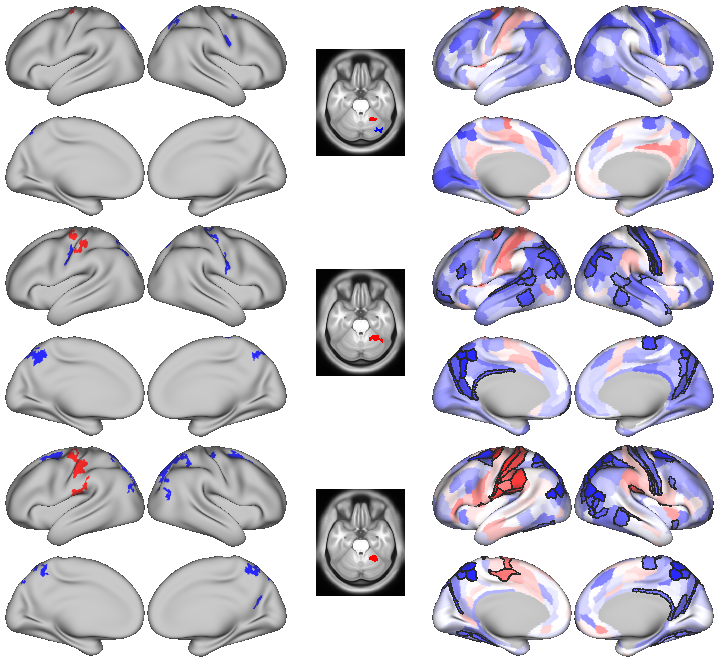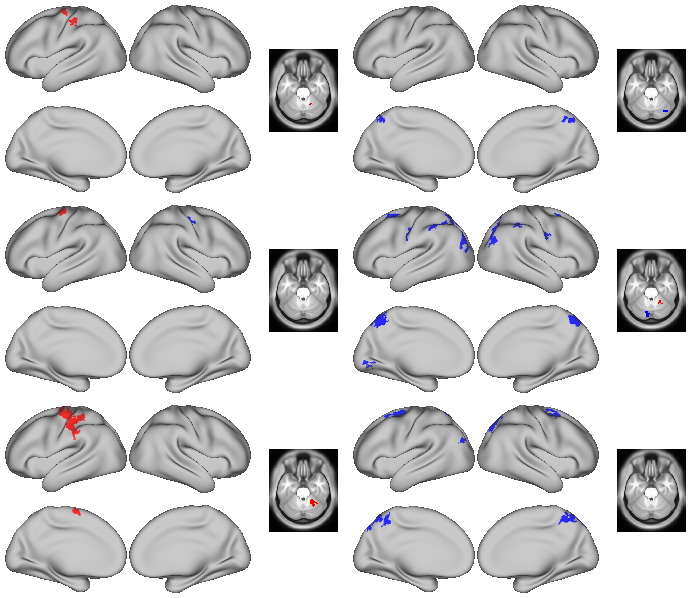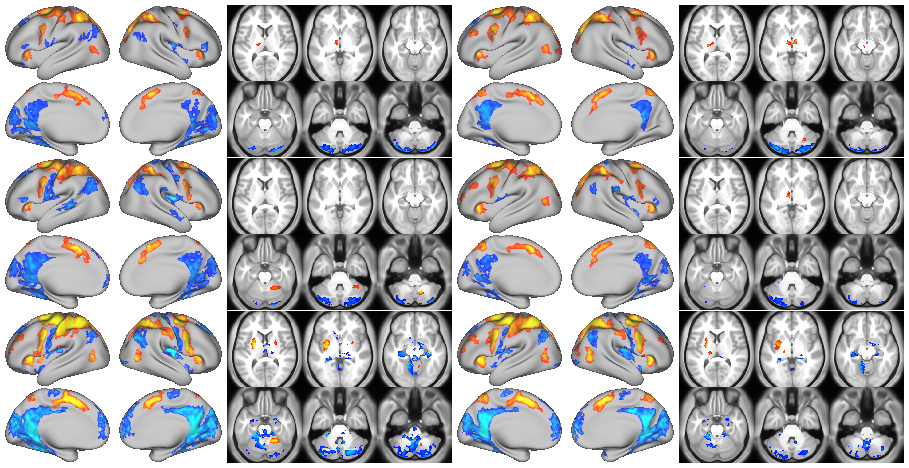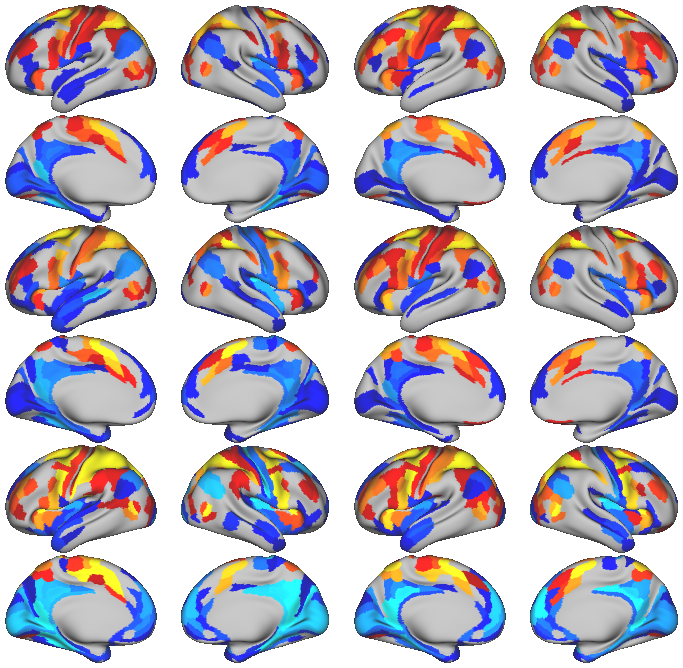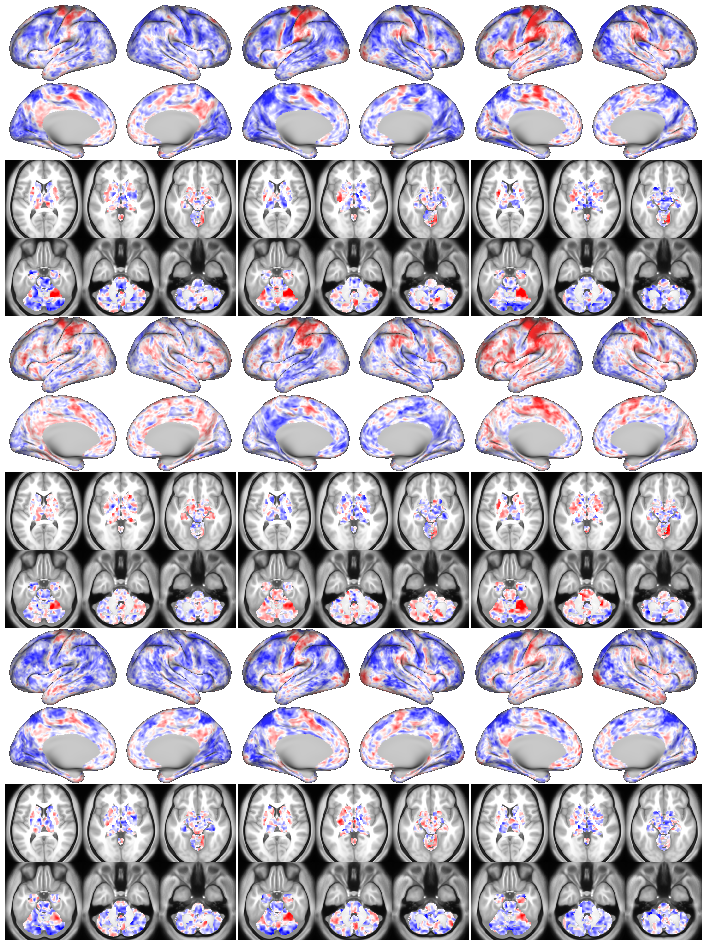FULL TITLE:
Neural evidence for different types of position coding strategies in spatial working memory
SPECIES:
Human
DESCRIPTION:
This project holds whole-brain statistical maps for the paper Purg, N., Starc, M., Slana Ozimič, A., Kraljič, A., Matkovič, A., and Repovš, G. (2022). Neural evidence for different types of position coding strategies in spatial working memory. Frontiers in Human Neuroscience. 16:821545. doi: 10.3389/fnhum.2022.821545
ABSTRACT:
Sustained neural activity during the delay phase of spatial working memory tasks is compelling evidence for the neural correlate of active storage and maintenance of spatial information, however, it does not provide insight into specific mechanisms of spatial coding. This activity may reflect a range of processes, such as maintenance of a stimulus position or a prepared motor response plan. The aim of our study was to examine neural evidence for the use of different coding strategies, depending on the characteristics and demands of a spatial working memory task. Thirty-one (20 women, 23 ± 5 years) and 44 (23 women, 21 ± 2 years) participants performed a spatial working memory task while we measured their brain activity using fMRI in two separate experiments. Participants were asked to remember the position of a briefly presented target stimulus and, after a delay period, to use a joystick to indicate either the position of the remembered target or an indicated non-matching location. The task was designed so that the predictability of the response could be manipulated independently of task difficulty and memory retrieval process. We were particularly interested in contrasting conditions in which participants (i) could use prospective coding of the motor response or (ii) had to rely on retrospective sensory information. Prospective motor coding was associated with activity in somatomotor, premotor, and motor cortices and increased integration of brain activity with and within the somatomotor network. In contrast, retrospective sensory coding was associated with increased activity in parietal regions and increased functional connectivity with and within secondary visual and dorsal attentional networks. The observed differences in activation levels, dynamics of differences over trial duration, and integration of information within and between brain networks provide compelling evidence for the use of complementary spatial working memory strategies optimized to meet task demands.
PUBLICATION:
Frontiers in Human Neuroscience
- DOI:
10.3389/fnhum.2022.821545
- Purg, N.
- Starc, M.
- Slana Ozimič, A.
- Kraljič, A.
- Matkovič, A.
- Repovš, G.
- Faculty of Medicine, University of Ljubljana, Ljubljana, Slovenia
- Department of Psychology, Faculty of Arts, University of Ljubljana, Ljubljana, Slovenia
-
BALSA.scene
SCENES:- Figure 2. Significant delay-related responses.
- Figure 3. Differences in the delay activity between task conditions thought to promote either retrospective sensory or prospective motor coding, respectively.
- Figure 4. Differences in early and late phases of the delay activity between task conditions thought to promote either retrospective sensory or prospective motor coding, respectively.
- Figure 5A. ROIs used in functional connectivity analysis.
- Figure S2B. Dense whole-brain delay activity during individual task conditions.
- Figure S3. Average delay activity during individual task conditions based on analysis of parcellated data.
- Figure S4. Consistency of delay-related differences across different task conditions and experiments.
- Figure S5. Functional connectivity within the spatial working memory network during the delay period for each task condition in Experiment I.


